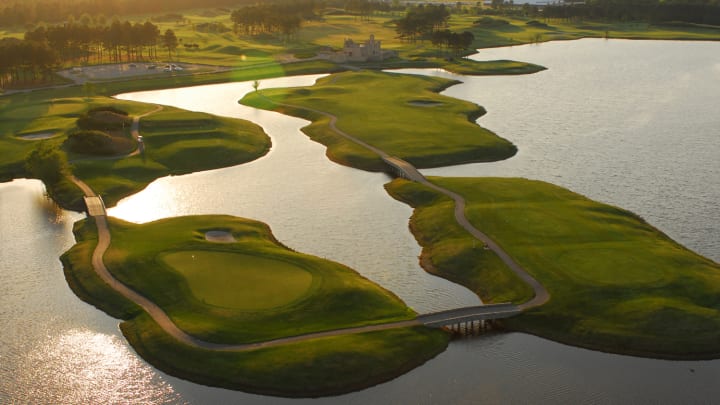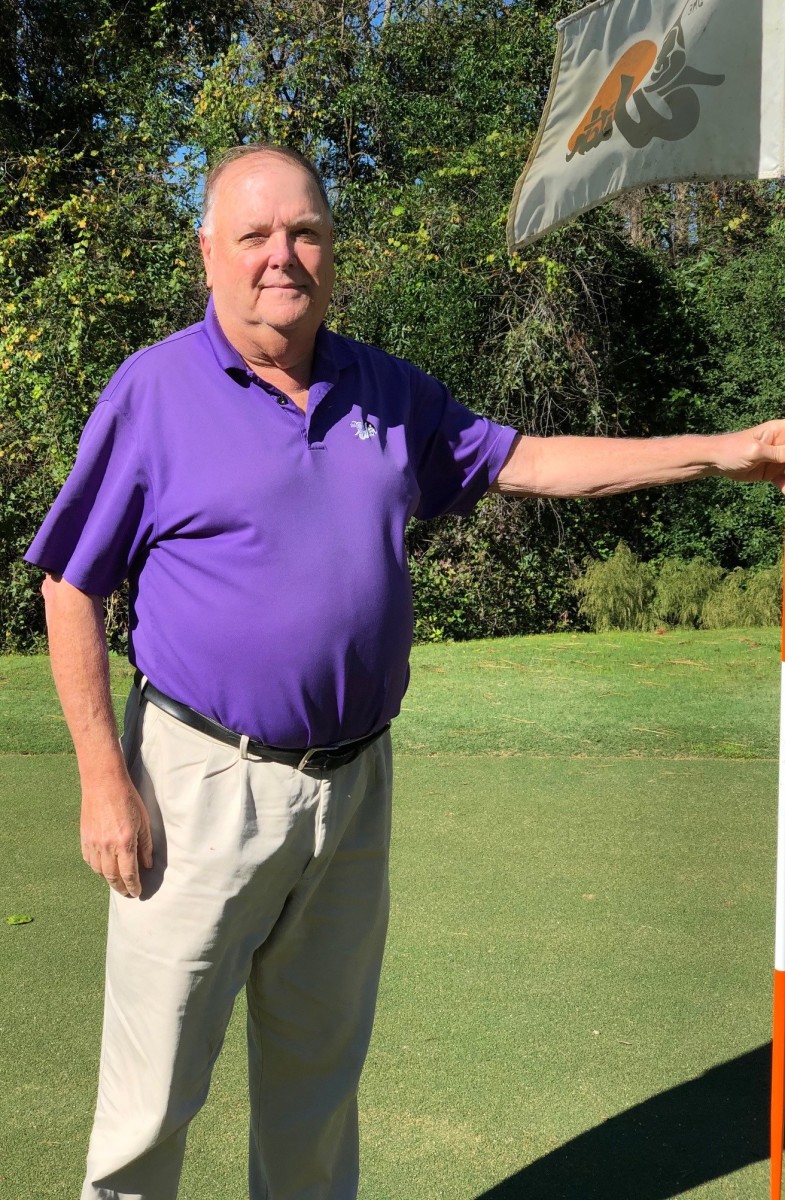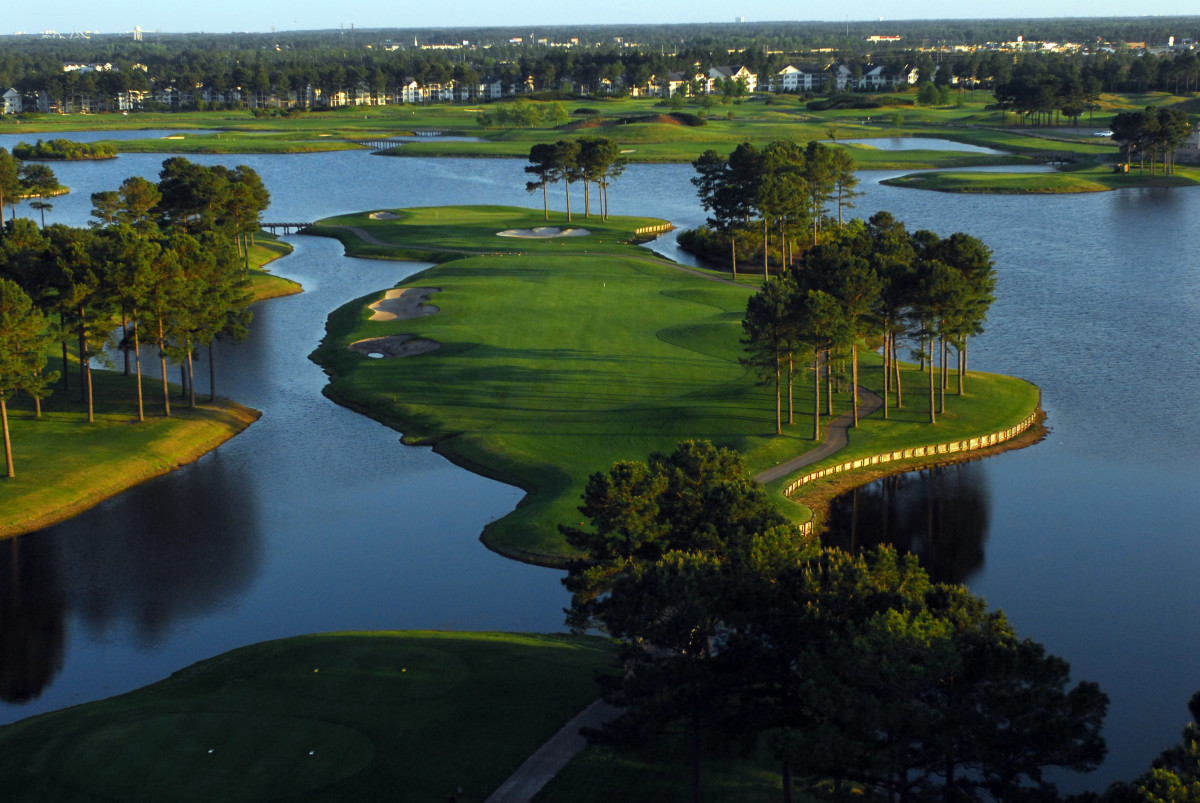Into the Mystic: Claude Pardue’s Unique Approach to Course Operation

Sitting in a golf cart not far from the 17th tee box at The Wizard Golf Club, one of two courses that comprise Mystical Golf, founder and owner Claude Pardue watches as a group of players take on the final two holes of the course.
The Wizard’s layout is one that brings to mind sweeping Scottish links, and that’s not by happenstance. One and a half million cubic yards of earth were moved and purposefully shaped back in 1996 when Dan Maples and Michael Gleason designed and constructed the course.
Although such a tactic feels out of place today given the restrained approach that many of the top contemporary course architects bring to new builds, it was necessary 25 years ago. At that time, Pardue was expanding his golf enterprise in Myrtle Beach, South Carolina, building two courses simultaneously on one 374-acre parcel of land. At the property’s center sits a vast, manmade lake, one that meanders its way through the eastern half of the site, cutting channels and coves into the terrain.
The water-strewn portion of the site is home to Mystical Golf’s second course, the predominantly flat Man O’ War Golf Club, which was also designed by Maples and Gleason and harbors the look and feel of a classic Floridian resort course. Because of that, Man O’ War’s sister layout needed to offer a distinct playing experience, so Pardue committed to reshaping the terrain into a golf course that stood out not just from the 18 holes that operated some 2,000 feet away but also from the hundreds of other courses in the greater Myrtle Beach area.
After the first hole, The Wizard moves away from the lake and replaces water hazards with lush native areas, strategically planted gorse-like juniper bushes, and aggressive mounding. Only for its concluding trio of holes does The Wizard bring Mystical Golf’s predominant lake back into play. For much of the round, golfers are likely to marvel at how much fun the layout is to play — a characteristic of the course that has Pardue beaming with pride.
“When I was building Man O’ War and The Wizard,” says Pardue, the CEO of DG Golf Management, which runs Mystical Golf, “if there was anything about one of them that was like the other, I immediately changed it. Every little detail is totally different about the two.
“I believe in putting on a show for my customer. I want him to see things that he’s never seen on a golf course before. Guys who have never been to Scotland, I want them to see that on The Wizard.”

Like any entrepreneur who owns, operates, and develops parcels of land where tee boxes give way to lush fairways and greens are guarded by foreboding bunkers, Claude Pardue would tell you that he’s in the golf business. But the golf business means something different to the 60-something, who first cut his teeth in the industry 100 miles to the north in Southern Pines, North Carolina.
The most striking example presents itself shortly after guests enter either of Mystical Golf’s two distinctive clubhouses. Each contains a modest pro shop, and there are a handful of tables where golfers can sit and eat either before or after their rounds. But food offerings are kept simple — hot dogs and chicken salad sandwiches, for example — as are the drinks, which cover your standard beverage cooler offerings, as well as a soda fountain and iced tea dispensers. Neither clubhouse is equipped with a traditional restaurant and, as Pardue quickly points out, neither operation has a bar. That’s also how Pardue likes it.
“We want you and your buddies to have a great experience [on the course],” he says. “Then I can tell you where the 10 sports bars are within four miles of us, where you can go to drink, and party, and watch the ballgame, and everything else you want to do. That’s just not what we do.”
Pardue has planted his flag firmly on the hill that Mystical Golf is only about the on-course experience. “I want a golf environment,” he says. “There are golf courses out there that will feed you all day, but they’re not selling golf. I’m selling golf.
“One of the biggest problems that too many businesses in any industry make is they try to be everything to a customer. Successful businesses in any industry are those who know what they are, they have a game plan to be what they are, and that’s all they do.”
RELATED: Grand Strand Golf Experiencing a Grand Resurgence
By not managing a traditional restaurant and bar, Pardue and his team can devote even more time to ensuring that the playing experience on both of Mystical Golf’s courses is top notch. In preparation for Myrtle Beach’s golfing high season, which runs from January through April, Pardue overseeds both courses from edge to edge with rye grass each October.
As the course owner acknowledges, the practice carries a steep price, but it allows The Wizard and Man O’ War to stand out from many other courses in the area that don’t implement such a strategy and are characterized by brown, dormant Bermuda grass during the months when many golfers from the north are wanting to escape the winter and are hoping to see (and play on) green grass.
In Pardue’s estimation, a lush, emerald-colored course during those months adds even greater value to a round of golf played at either Man O’ War or The Wizard, and it’s a lesson that Mystical Golf’s founder first learned during the mid-1980s, shortly after he acquired the Hyland Hills Golf Club (now Hyland Golf Club) in Southern Pines, North Carolina.
When Pardue bought Hyland Hills in 1984, the Tom Jackson-designed resort course was almost 20 years old and in financial distress. Beyond committing to a purposeful investment to enhance course conditions, the then-34-year-old Pardue recognized that he could implement one of two strategies to rectify the situation. He could raise the greens fees, which the club could easily justify given the investments that were being made to improve the course. Or he could stand by the existing fees and know that in time the club’s customer base would grow as word spread that Hyland Hills provided great value.
Pardue chose the latter option, and within the two years the golf club’s business had increased 250 percent. “In five years we took that course from grossing $450,000,” he says, “to grossing over $2 million a year. And the number one thing that I did was [overseed with] rye wall to wall.” Eventually, Pardue did also raise rates at Hyland Hills, but he waited four years to do so.
A decade later, when Pardue was building Man O’ War and The Wizard, he invested significant capital into the construction of both course’s greens so that those putting surfaces could be seeded with Bentgrass and thrive during the hot summer months. Although the decision was made partly to stand out from the crowd — “we’re the only courses here [in Myrtle Beach] with ’em,” he claims — the choice was dictated more by Pardue’s strong opinion that Bentgrass greens are superior to all others.
“I don’t care what anybody says,” he asserts. “Bentgrass greens that are in real good shape are way better than any Bermuda green out there. If Bermuda greens were better, Augusta National would have Bermuda greens.”
Getting back to Mystical Golf’s clubhouses, the two buildings are not at all what you might envision if you were tasked with picturing a classic, South Carolina golf clubhouse. Man O’ War, for example, is home to a clubhouse built on wooden pilings; it juts out over the lake; and it’s designed to reflect a traditional fishing lodge. The Wizard, by contrast, was built to resemble — you guessed it — an ancient stone castle. That Mystical Golf features two clubhouses, one for each of its courses, on a property less than 400 acres in size is not superfluous or excessive in Pardue’s opinion. Instead, he views those clubhouses as strategic marketing pieces that structurally suggest to visitors that the two courses are fundamentally different.
“I wanted each of them to have their own identity,” Pardue says. “If you play one golf course at a two- or three-golf-course complex that has only one clubhouse, when you look out and see the same scenery or view, your first thought is, ‘Why do I need to play the other?’ Especially in a town like Myrtle Beach, where the marketplace has 100 golf courses for you to choose from.”

Pardue’s strategy to create themed courses, as it were, took root in 1989 when he developed The Witch Golf Club about four miles to the west. Another Maples and Gleason layout, which traversed 500 secluded acres (including stretches of wetlands), the course garnered its name thanks to some of those natural areas, which Pardue deemed to have a spooky character. Once that moniker was chosen, Pardue doubled down on the theme, building a clubhouse that evoked a witchy aesthetic.
He wasn’t concerned that prospective visitors would be off-put by the theme or that they might infer that the course was gimmicky and thus, stay away. Instead, Pardue wanted to create a course that was easily remembered. He knew he would get first-time play given the vitality of Myrtle Beach’s golf market during the late 1980s and early ’90s, and once again, he took the stance that if he could impress those first-timers with a high-quality course, he’d have them hooked for future rounds. He was right.
Today, despite his success with The Wizard and Man O’ War courses, along with his past successes with The Witch — which was sold in December 2021 — Pardue acknowledges that his approach to course ownership and operation, while it works for him, is not a method that will appeal or work for everyone.
“One of my strengths or weaknesses — whichever way you look at it — is that when I get an idea I believe that I’m right,” he says. “But I’m not conceited enough to think that my way of doing it is the only right way of doing it.”
That mindset has served Pardue well throughout the years, especially since Myrtle Beach’s golf market is one that’s supported heavily by golf travel packages, which have been created by companies like Golf Holiday as far back as the early 1970s. Because of that, Myrtle Beach’s golf industry isn’t a marketplace where every course operator is necessarily out for themselves. Instead, the politics at play within that insular business community can be challenging, though Pardue feels comfortable and confident being able to play well in that environment.
“I realize that another golf course five miles away is my competitor,” he says, “but for getting golfers into Myrtle Beach, that course is also my partner.”
